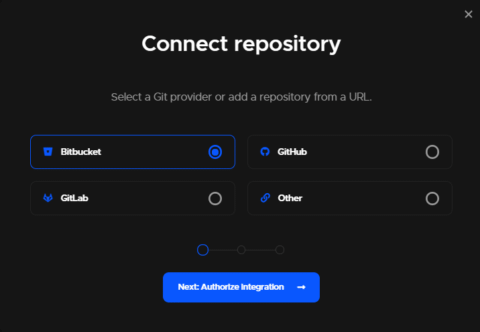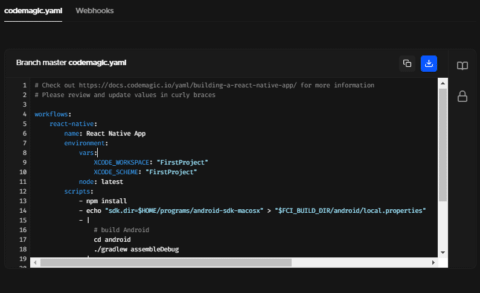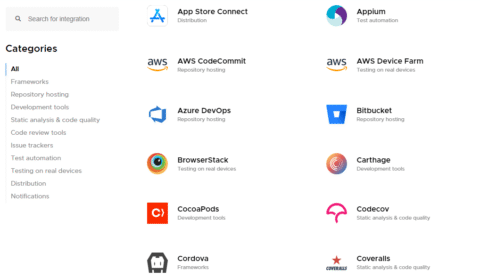In this article, we will look at the common DevOps challenges & bottlenecks and how to overcome them with Codemagic. Written by Sneh Pandya
One of the main goals of DevOps is to improve the overall workflow in the software development life cycle (SDLC). In order to effectively remove bottlenecks that decrease the flow of pipelines, one must first analyze the people, process and technology aspects of the entire SDLC. Factors such as cultural differences among teams, outdated infrastructure, age-old practices and lack of well-defined objectives, among others, challenge the success of the Software Development Life Cycle (SDLC).
In this article, we will look at the common bottlenecks that have the biggest impact on the flow of work.
So, let’s get started. But first, can you let us know what your relationship with CI/CD tools is?
DevOps challenges: Environmental challenges
When the codebase moves from team to team, such as during development, testing, deployment and production in the software development process, there is a certain amount of waste because all the various environments used in the process are configured differently. The different wiring of these diverse environments makes it difficult for software to function similarly on different platforms.
As a result, teams spend hours and days trying to fix bugs without realizing that the error is not within the code – rather, the problem is with the environment. Inconsistent environments are the number one killer of agility.
Solution
Create infrastructure blueprints and implement continuous delivery to ensure all environments are identical. The teams involved in the process need to sit together and outline a standard blueprint for the execution of the DevOps process and introduce continuous delivery into the process to stay on the same page.
Codemagic has an in-built infrastructure and provides end-to-end CI/CD pipelines for mobile apps. You can manage and expand your environment in just a few steps on Codemagic. It also allows you to encrypt and use environment variables without storing them on the machines. You can connect your GitHub, GitLab or Bitbucket account, set up pipelines and schedule builds for different branches with ease.
DevOps challenges: Maturity in DevOps and SDLC
The maturity of a team’s software development lifecycle (SDLC) has a direct impact on their ability to deliver software. With SDLC, teams should be able to deliver high-quality, reliable software more quickly. SDLC maturity has plagued the IT industry for decades.
In the age of DevOps, when software is delivered in shorter increments with a high degree of reliability and quality, it is even more critical for a team to have a mature process. Some organizations are still not equipped to work with the agility of DevOps. Most of these organizations are either at an early point in the process or (mistakenly) assume that they know it all.
Solution
Organizations should help teams adopt DevOps tools and technologies and invest in training. Teams should continuously solicit feedback and improve. Investing in all-in-one solutions can help teams adopt DevOps with ease, and teams can deliver features more efficiently and with fewer breakdowns.
Codemagic provides CLI tools to configure and execute pipelines as well as receive feedback from the pipelines executed. You can also set up webhooks to receive updates.
DevOps challenges: Manual testing and deployment
Manual intervention is not always advisable for all IT processes, especially for testing and deployment interfaces/scenarios. It hampers efficiency, wastes time and reduces accuracy to a great extent. Manual intervention leads to human error and non-repeatable processes. If testing is performed manually, it is impossible to implement continuous integration and continuous delivery in an agile manner. Also, manual testing increases the chance of producing defects, creating unplanned work.
When deployments are performed completely or partially manually, the risk of deployment failure increases significantly, which lowers quality and reliability and increases unplanned work.
Solution
Automating the framework and deployment processes improves the overall strategy. Organizations need to consider implementing a testing procedure into the development process. This will help them to reduce deployment failures considerably.
Codemagic allows you to configure and perform tests, deploy to Google Play Store and Apple App Store, extract build artifacts and perform custom steps.
DevOps challenges: Improving change management
Many organizations have had their change management processes in place for years and are comfortable with them. Most of their processes were formulated at a time when change management meant refilling, employing and utilizing additional resources. Fast-forward to today’s environments, where applications are made of many small components or microservices that can be changed and deployed quickly. Now, all of a sudden, the process gets in the way.
These fast-paced environments demand almost immediate changes and deployment. Sometimes teams have to go through multiple security reviews, operations, code and change control). What is worse is that there is often a long line to wait in for reviews, causing review processes to slip another week.
Solution
Organizations with legacy processes need to look into modernizing their processes and becoming more agile instead of being the reason why their teams can’t move fast enough. Codemagic helps teams build and deliver apps faster with a pool of features under their belt. From a list of third-party integrations to native support for all popular mobile apps frameworks in one place, Codemagic has aced the game of making it convenient for teams to ship apps with ease.
DevOps challenges: Operability with DevOps
Moving to a DevOps model often requires adopting a different approach to operations. In most organizations, operations teams are accustomed to working with outdated applications. In an organization that needs to move at the pace of changing market trends, it is crucial for the operations team to support the delivery of software that is running while being worked on.
It requires a different mindset to support software that is delivered as a service that is always on and deployed frequently. With DevOps, operations are no longer just something the operations team does. Developers now must have tools that allow them to effectively support applications.
Most companies are focused only on monitoring infrastructure. But in a DevOps process, developers need access to tools, including logging solutions, web and mobile analytics, application performance monitoring tools, advanced alerting and notification solutions, provided by the operations and data and analytics teams.
Solution
Organizations need to assess their operational processes and tools and modernize the structure they use to deliver software to increase agility and transparency. Additionally, processes such as change management, problem management, request management, incident management, access management and others often need to be improvised and revised along with the changing environment to ensure more agility and transparency.
The diverse set of integrations provided by Codemagic offers stability, analytics, issue tracking, code quality, notification, distribution of the applications and more. You can choose from this list of integrations compatible with Codemagic.
DevOps challenges: Obsolete practices
Most organizations have dedicated teams to perform specific operations, such as testing the application. These teams are often disconnected, and there is only a bare minimum level of collaboration between them. This results in an endless cycle of code being sent testing and being sent back. In this process, bugs are detected by the QA team and sent to developers, who must quickly build, fix and redeploy the code.
This process is repeated until there is no time remaining, and teams are left to agree on what defects they can tolerate and promote to production. This is a death spiral in action. With every release, they introduce more technical debt into the system, lowering its quality and reliability and increasing unplanned work.
Solution
It’s better to block bugs from moving forward in the development process. This is accomplished by building automated test harnesses and automatically failing the build if any of the tests fail. Continuous integration has been designed for this process. Testing should be implemented as part of the process rather than after the development process.
Codemagic is the fastest mobile CI/CD out there with easily customizable workflows. You can connect your existing infrastructure and services to automate your pipelines.
DevOps challenges: Automate repetitive tasks
A very common pattern is the automation of repetitive tasks that kill time. But working on automating processes for existing infrastructure is like building a castle on loose sand, and the result is not hidden. This occurs when a team declares itself to be a DevOps team or a person declares themselves to be a DevOps engineer and immediately starts writing hundreds or thousands of lines of scripts to automate their existing processes.
Solution
Automating non-usable code or processes is like pouring concrete around unbalanced support beams. It makes a bad design permanent. Automation should come after new processes and practices have been put into place and after the bottlenecks have been removed.
DevOps challenges: Incentive-driven approach
Developers are incentivized to improve speed to market, and operations are incentivized to ensure security, reliability, availability and governance. Although this bottleneck may seem adrift from the topic, it very much influences DevOps processes. The most common practice in organizations is for every team to work with their own benefits in mind rather than having a common goal of customer satisfaction.
If every team is not marching towards the same goals, then there will be a never-ending battle of priorities and resources. If this practice continues, then every DevOps process will remain an unsolved puzzle forever.
Solution
Management should consider rearranging incentives awarded to employees with the common good of the organization in mind. Everyone should measure success in a way that enforces those incentives. Then, everyone wins – especially the customer.
Did you know that Codemagic reduces development time by 50%? Their premium VMs are the best-in-class to supercharge your team’s productivity by running multiple builds in parallel.
DevOps challenges: Lack of governance
When starting to implement DevOps, it is easier to have success in small, isolated teams and for an initial project. Once the DevOps initiative starts scaling to larger projects running on many more infrastructures, or once it starts spreading to other teams, it can come crashing down without proper governance in place. With DevOps, costs and efficiency start spiraling out of control if the appropriate controls are not in place.
Solution
Organizations need to assign an owner and start building a plan for scaling DevOps across the organization. The organization has to make the decision, and the owner needs to identify needs such as the following:
Whether the organization is in a position to manage infrastructure and workloads across a large network
Whether there is a synchronous security network available to all the teams in the organization
Whether the teams can create their own infrastructure or if there is a dependency on a single-queue ticketing system
DevOps challenges: Executive measures
The most successful organizations have top-level support for their DevOps initiative. These organizations make DevOps a priority in their cycles. They break down barriers, drive organizational change, improve incentive plans, communicate why they are doing DevOps and fund the initiative.
Organizations that incorporate the practice into their system and do not have the required top-level monitoring suffer sooner or later. The DevOps process itself becomes a bottleneck in the organization’s growth. The practices should be introduced at a grassroots level. Sometimes when executives see the results and the ROI, they become the champions for furthering the cause.
Solution
Grassroots teams should collect before-and-after statistics to get the top level to buy into the might of the DevOps process. Discussing possibilities and tradeoffs while evangelizing DevOps upward brings positive change. Moreover, showing the approach and strategy for setting up DevOps and scaling helps build trust in the organization.
Codemagic helps thousands of developers, teams and organizations level up their DevOps game. Security is a priority in addition to excellent features. Codemagic has different plans suitable for different sizes of teams and organizations, including an Enterprise plan.
Conclusion
Embracing DevOps is a long, continuous journey. The secret to success is to identify what the bottlenecks are and put steps in place to remove them. Removing these bottlenecks requires great patience. Too much change at one time can be too disruptive. Fixing one thing at a time can prove to be the best strategy in most cases. Start with a few quick wins to show progress, but also implement a solution for a high-impact bottleneck early to make a major impact on the flow.
Useful links and resources
Here’s an article on what Mobile DevOps is and why you should care.
Here’s an article on DevOps testing tools in 2021.
For discussions, learning and support, join the Codemagic Slack Community.
Sneh is a Senior Product Manager based in Baroda. He is a community organizer at Google Developers Group and co-host of the NinjaTalks podcast. His passion for building meaningful products inspires him to write blogs, speak at conferences and mentor different talents. You can reach out to him over Twitter (@SnehPandya18) or via email (sneh.pandya1@gmail.com).








